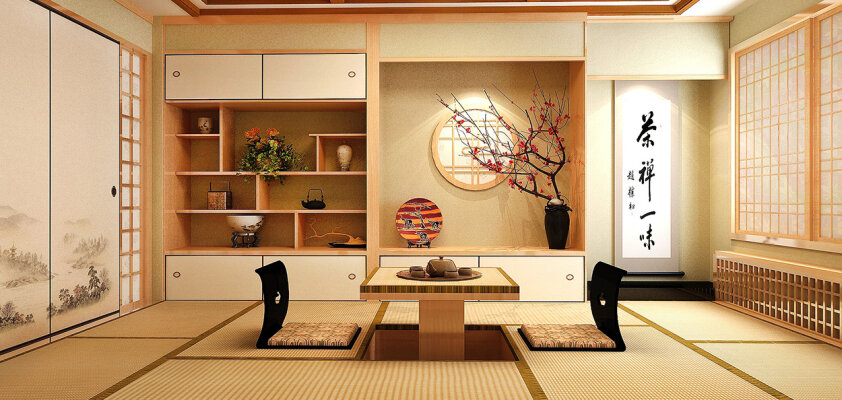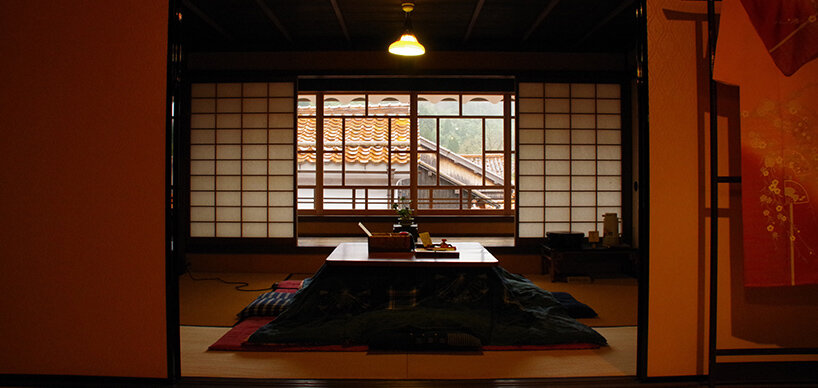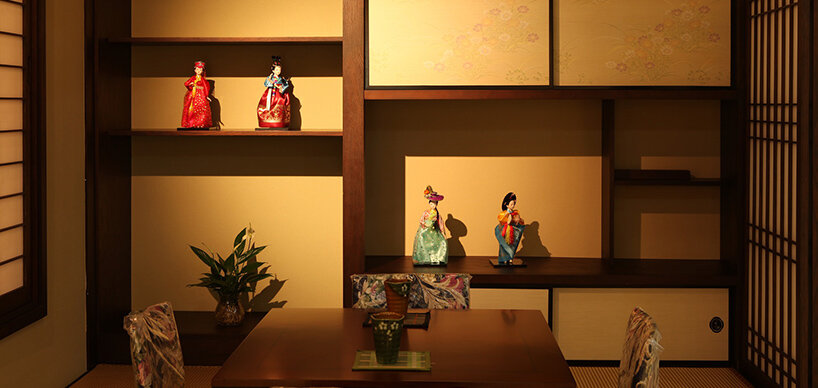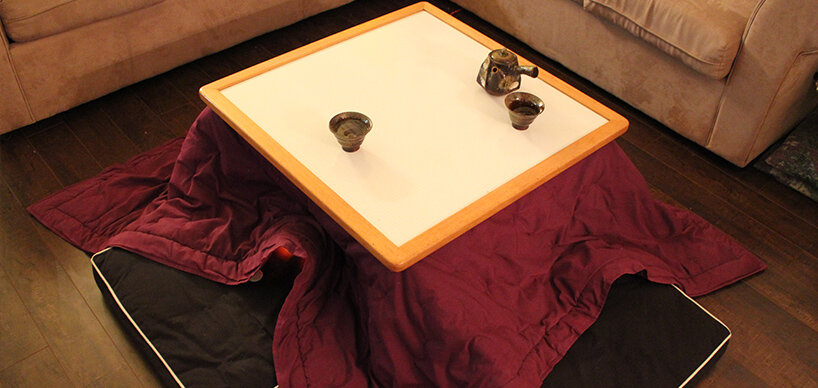Kotatsu: The Table That Provides Warmth

Instead of a heater, a special table in winter? Such a thing exists only in Japan. Find out how it works and why this piece of furniture can tell us so much about Japanese culture.
Grounded Japanese living culture
How do you imagine a typical Japanese apartment? Many spontaneously think of a small room with austere furnishings and tatami mats. Since the success of the decluttering expert Marie Kondo, we may think we know how neat and minimalist people live in Japan. No wonder, especially in a metropolis like Tokyo with over 9 million residents, there is not much space for extravagance and excess.

However, the design of a Japanese apartment is not just a result of necessity but also rooted in tradition. Even smaller things, such as the typical sitting posture, determine how furniture must be designed. The Japanese Seiza sitting position is well-known: kneeling with the legs together and the tops of the feet flat on the floor. Many foreigners unfamiliar with this sitting posture wonder how one can maintain it for an extended period. However, many Japanese still sit this way, just as they prefer sleeping on a futon. The taboo on wearing shoes inside the home in Japan, where much activity takes place on the floor, is self-evident.
Why does Japan want to be so close to the earth? This floor culture is typical of East Asian countries and has many reasons. It is not only space-saving but also safer: in a country like Japan, where earthquakes are common, having as few tall pieces of furniture as possible can save lives by reducing the risk of items falling on residents in the worst-case scenario. One could also argue based on the Japanese inclination towards a connection with nature and grounding. Additionally, in a home with Tatami mats, many heavy pieces of furniture would damage them.
A table between tradition and modernity
The fact is: most people are simply accustomed to this lifestyle. Especially since Western home culture arrived in Japan relatively late, a country that long resisted foreign influences. Compared to Western furniture, typical Japanese interior is simple, functional, close to nature, and takes up as little space as possible. Sliding Shoji instead of doors, Tatami instead of parquet, and cushions instead of chairs – all of this changed only since the Meiji Restoration in 1868. Initially, it affected public spaces and later private residences in Japan. Furniture items such as beds, doors, and chairs, which are taken for granted by us, would not have been found in a Japanese home about 150 years ago. While Japan has adapted to this modernization to some extent, it does not apply to all furniture.
The Kotatsu, Japanese 炬燵, is an example of a traditional piece of furniture that adorns almost every home in Japan. It is an approximately 36 cm high table, usually made of wood, covered with a futon and equipped with a heating element. In winter, it is indispensable, as most Japanese houses are not insulated and only heated with air conditioning. Summers, except on the northern island of Hokkaido, are longer and much more intense than winters in Japan. Therefore, in Japan, people resort to localized warmth like this table – heated toilet seats serve as reminders elsewhere. Tables without a heating feature in Japanese homes are called Chabudai. They are slightly lower and can serve various functions from a writing desk to a dining table.

Japan and Kotatsu: A special relationship
However, a Kotatsu table in winter is more than just a source of warmth: it is also the centerpiece of social traditions. As a modern equivalent to the traditional cooking stove fueled by coal, which was also located in the center of the room, it attracts the entire family on cold winter evenings. Everyone kneels or sits on a cushion or directly on the Tatami mat at the Japanese table and tucks their legs under the futon cover. The electric heating element in the Kotatsu ensures that everyone stays warm. Winter feelings arise when traditionally eating oranges or clementines at this table. Some even sleep under the Kotatsu – although it's not advisable as one can quickly get burned.
One may wonder: okay, if the legs are warm under the cover, what about the rest of the body? For the Japanese, the center of the soul, emotions, and well-being traditionally lies in the stomach. Keeping this area warm also prevents diseases elsewhere. And in reality, it works too: anyone who has sat under a Kotatsu knows how comfortably warm it becomes after a short time.
For those in Japan who don't want to miss the Kotatsu table not only at home but also on the go, there has been a "Kotatsu Train" operating in the Iwate Prefecture for several years. This tourist attraction, which keeps travelers warm and cozy through the winter in Japan, operates from January to March, offering snowy views and traditional bento.

Picture Credits: Author: Marieve 瑞香 Inoue | Flickr | License
A kotatsu not only keeps you warm
Even if it's not immediately apparent, sitting low brings many health benefits. Those who cannot lean back or slouch automatically sit more upright. Lower sitting also promotes digestion and can demonstrably increase energy and concentration. Those who frequently forego high chairs tend to sleep better in the long run and are more flexible. Finally, physical activity when getting up is higher here: the easier one can get up from sitting, the healthier and more long-lasting one is – a good opportunity for exercise. Just as sleeping on a good futon with cotton filling can be good for the back, sitting at a Chabudai or Kotatsu can also be beneficial for the body. A trend toward lower chairs and tables can also be observed in Western furnishings.
By the way, you don't necessarily have to become a Seiza master to enjoy the benefits of a Kotatsu. Try out other sitting positions, such as the "Grandma Sit" (obachan suwari): here, you also kneel but sit on your buttocks, and your legs rest on the side.
However, finding a Kotatsu table outside of Japan can be challenging. Initial sources could be online markets such as Amazon or Rakuten. Companies like Yamazen have expanded the delivery of Kotatsu and similar heating elements to Europe. For those who want to avoid Japanese imports, they can build one themselves with some handy skills. If you are looking for a bit of Japanese coziness, warmth, and sociable culture for your home, you will definitely find something.
Also, check out our article on Paravent, Raumteiler und prunkvolle Bescheidenheit:











-from-the-yakiyaki-grill-pan.jpg)




